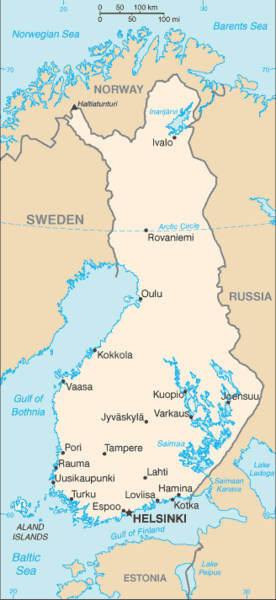
Even though European populations have been studied for years, there are still many lingering questions as to the continent’s population history — especially with regards to isolated peoples. Understanding the history of the Basque of northern Spain has long been a topic of interest among geneticists, as has the origins of the indigenous Saami of northern Finland.
Now, a study published by geneticists at the University of Helsinki supports the conclusion of some recent studies that have hinted that the Finnish people themselves are more genetically isolated than other European populations.
Traditional methods of examining genetic ancestry are focused on two areas of our genome: our mitochondrial DNA, which is passed down from mothers to children, revealing information on our maternal ancestry, and the Y-chromosome, which is passed down from fathers to sons, revealing our paternal ancestry.
But these are only two relatively small regions of our entire genome, and geneticists have often said that to truly understand a person’s ancestry we must examine human DNA much more broadly. One way to do this is to use a genome-wide analysis, examining hundreds of thousands of genetic markers. The new University of Helsinki study did just that, analyzing more than 250,000 unique SNPS across the entire human genome.
What the researchers found was quite intriguing. First they investigated German and British populations as a basis for comparison and found them to be genetically close to one another – hardly a surprise considering their historical closeness. But when the researchers looked at populations from Finland in comparison to other parts of Europe, they found few enough similarities to conclude that Finnish people are genetically isolated from other parts of Europe.
This study is important for a few reasons. First, it illustrates that using genome-wide analysis, rather than only using the Y-chromosome or the mitochondrial DNA, can reveal much about population history. Second, it confirms previous hypotheses that Finland — which is both geographically and linguistically isolated from other parts of Europe — is genetically isolated as well.
The ancestors of the modern Finns, once they arrived in this cold land thousands of years ago, remained relatively separate from even their closest European neighbors. Although modern travel and telecommunications have likely reduced this isolation, the remnants of it are still evident in the genetics.



